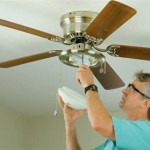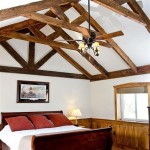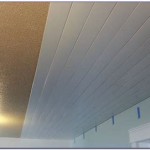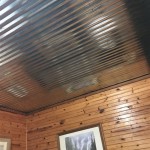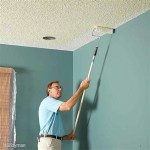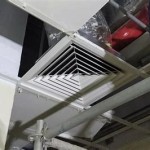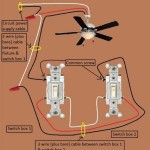Getting The Right White Ceiling Fan With Light For Your Home Office
White ceiling fans with lights are a popular choice for home offices, blending functionality with a clean, aesthetic appeal. Selecting the appropriate model requires careful consideration of various factors, including size, lighting capabilities, energy efficiency, and style. This article provides a comprehensive guide to help individuals choose the ideal white ceiling fan with light for their home office environment.The primary function of a ceiling fan is to circulate air, providing both cooling during warmer months and warmth during cooler months when used in reverse. The addition of a light fixture enhances the fan's utility, providing illumination for work tasks and reducing the need for additional lamps. A white finish ensures the fan blends seamlessly with most interior designs, creating a cohesive and professional workspace.
Before delving into the intricacies of selecting a white ceiling fan with light, it's crucial to understand the benefits it offers to a home office. Beyond basic air circulation and lighting, a well-chosen fan can contribute to improved comfort, enhanced productivity, and reduced energy consumption. It's also a stylish addition, elevating the overall aesthetic of the workspace.
Determining the Appropriate Size
Selecting the correct size of a ceiling fan is paramount for optimal performance. A fan that is too small will struggle to effectively circulate air, while one that is too large can be visually overpowering and potentially create excessive noise. The size of the room directly dictates the appropriate fan blade span.
For a small home office, typically defined as being less than 100 square feet, a ceiling fan with a blade span of 42 inches or less is generally sufficient. This size ensures adequate air circulation without overwhelming the space. Consider models with a lower profile to maximize headroom, especially in rooms with lower ceilings.
For medium-sized home offices, ranging from 100 to 225 square feet, a ceiling fan with a blade span of 44 to 52 inches is typically recommended. This size provides a balance between air circulation and visual appeal. Ensure the fan is centrally located within the room for optimal performance.
Larger home offices, exceeding 225 square feet, require a ceiling fan with a blade span of 54 inches or more. In particularly large spaces, multiple fans may be necessary to ensure adequate air circulation throughout the entire area. Consider models with powerful motors for efficient performance in larger rooms.
Beyond square footage, ceiling height also plays a role in determining the appropriate fan size. For ceilings lower than 8 feet, a flush-mount or hugger-style fan is recommended to maximize headroom and prevent the fan from feeling too close to occupants. For ceilings 9 feet or higher, a downrod extension may be necessary to position the fan at an optimal height for air circulation.
When measuring for a ceiling fan, consider any existing furniture or obstacles in the room. Ensure the fan blades have adequate clearance to rotate freely without obstruction. A minimum of 18 inches of clearance from walls and other objects is generally recommended.
Evaluating Lighting Options and Brightness
The light fixture integrated into a white ceiling fan is a critical component, providing essential illumination for work tasks. Different lighting options offer varying levels of brightness, color temperature, and energy efficiency. Careful consideration is needed to choose a lighting solution that meets the specific needs of the home office.
LED (Light Emitting Diode) lights are the most popular choice for ceiling fan lights due to their energy efficiency, long lifespan, and versatility. LED bulbs consume significantly less energy than traditional incandescent or halogen bulbs, resulting in lower electricity bills. They also last much longer, reducing the need for frequent replacements.
The brightness of a light fixture is measured in lumens. The appropriate number of lumens for a home office depends on the size of the room and the type of tasks performed. A general rule of thumb is to aim for approximately 400-500 lumens per 100 square feet. For tasks requiring more focused illumination, such as reading or detailed work, consider a brighter light fixture.
Color temperature, measured in Kelvin (K), affects the overall ambiance of the lighting. Cooler color temperatures (5000K-6500K) produce a bright, white light that is ideal for tasks requiring high levels of concentration. Warmer color temperatures (2700K-3000K) produce a softer, more inviting light that is suitable for creating a relaxed atmosphere. For a home office, a neutral white color temperature (around 4000K) is often a good compromise, providing a balance between brightness and comfort.
Many ceiling fans with lights offer dimming capabilities, allowing for adjustable brightness levels. This feature is particularly useful for creating different moods and adapting to varying lighting conditions throughout the day. Dimming can also help reduce eye strain and improve overall visual comfort.
The style of the light fixture should complement the overall design of the ceiling fan and the home office. Options range from simple, minimalist designs to more elaborate fixtures with decorative elements. Consider the shape, material, and finish of the light fixture to ensure it integrates seamlessly into the space.
Some ceiling fans with lights feature integrated LED panels, while others use replaceable bulbs. Integrated LED panels offer a sleek, streamlined appearance, but they may be more difficult to replace if they fail. Replaceable bulbs provide more flexibility in terms of choosing specific brightness levels and color temperatures.
Examining Features and Functionality
Beyond size and lighting, various features and functionalities can enhance the performance and convenience of a white ceiling fan with light. These features can contribute to improved comfort, increased energy efficiency, and greater control over the fan's operation.
Remote control functionality is a highly desirable feature, allowing users to adjust the fan speed and light settings from anywhere in the room. Remote controls typically offer multiple fan speed options, dimming capabilities for the light, and a reverse function for changing the direction of airflow. Some models also include timers and other advanced features.
Smart home integration is becoming increasingly popular, allowing users to control their ceiling fan with light using voice commands or smartphone apps. Smart ceiling fans can be integrated with popular smart home platforms, such as Amazon Alexa, Google Assistant, and Apple HomeKit. This allows for seamless control and automation of the fan's operation.
Energy efficiency is a key consideration when selecting a ceiling fan. Look for models with Energy Star certification, which indicates that they meet strict energy efficiency guidelines. Energy Star certified fans typically use less energy than standard models, resulting in lower electricity bills and reduced environmental impact.
The motor type of a ceiling fan can significantly impact its performance and noise level. DC (Direct Current) motors are generally quieter and more energy-efficient than AC (Alternating Current) motors. DC motors also offer more precise speed control and are often more durable. However, DC motor fans tend to be more expensive.
The number of blades on a ceiling fan does not necessarily determine its performance. Fans with fewer blades can be just as effective as those with more blades, depending on the blade pitch and motor power. Consider the overall design and aesthetics of the fan when choosing between models with different numbers of blades.
The blade pitch, or the angle of the blades, affects the amount of air the fan can move. A steeper blade pitch generally results in greater airflow, but it can also increase noise levels. For a home office, a moderate blade pitch is often a good compromise between air circulation and noise reduction.
The reverse function allows the fan to rotate in the opposite direction, drawing warm air down from the ceiling during cooler months. This can help to reduce heating costs and improve overall comfort. Ensure the fan has a reverse function if you plan to use it year-round.
Finally, consider the warranty offered by the manufacturer. A longer warranty indicates greater confidence in the product's quality and durability. Look for fans with a warranty of at least one year on the motor and other components.
By carefully considering these factors, individuals can select the right white ceiling fan with light for their home office, creating a comfortable, productive, and aesthetically pleasing workspace.
How To Choose The Perfect Ceiling Fan Color For Any Room City Lights Sf

Ceiling Fans With Lights Led Hunter Fan

How To For A Ceiling Fan Reviews By Wirecutter

Ceiling Fan Makeover 100 Room Challenge The Palette Muse

Oaks Decor Cotti 20 In Color Changing Integrated Led Flush Mount Smart White With Clear Blades Fandelier Ceiling Fan Light Remote Included 7 Blade The Fans Department At Com

Ceiling Fan Makeover 100 Room Challenge The Palette Muse

How To For A Ceiling Fan Reviews By Wirecutter

Ceiling Fans With Lights Led Hunter Fan

Home Decorators Collection Ashby Park 52 In White Color Changing Integrated Led Brushed Nickel Ceiling Fan With Light Kit And Remote Control

How To Choose A Ceiling Fan For Comfort And Style
Related Posts

